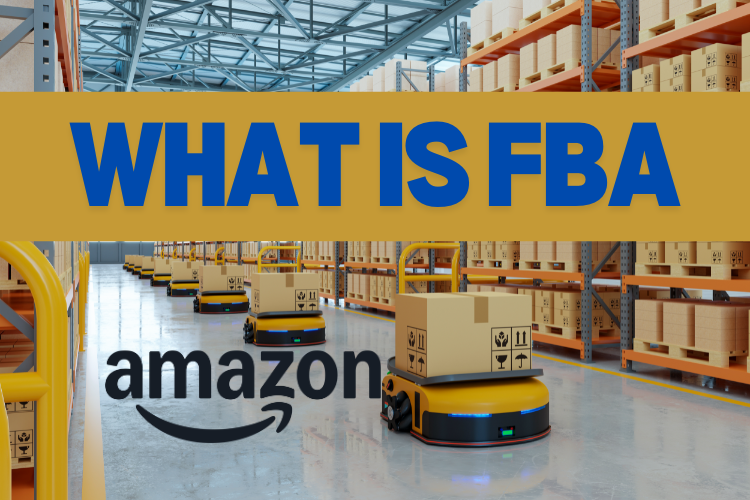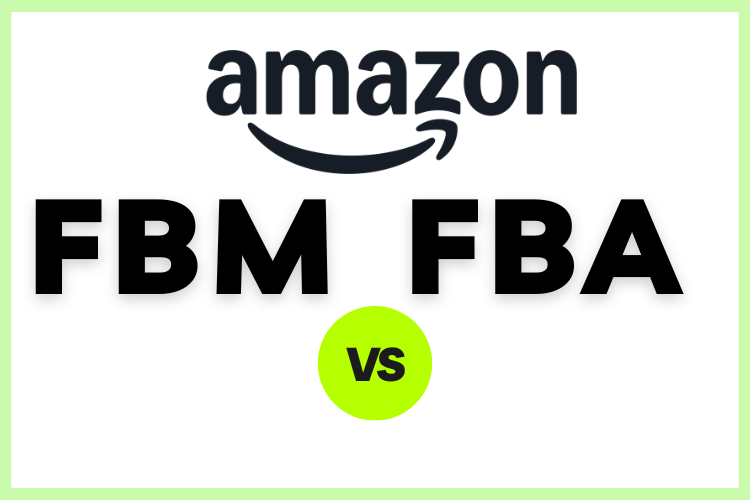FBM vs. FBA Fulfillment: Which is Right for Your Brand?

For brands selling on Amazon, choosing the right fulfillment method is crucial to ensuring customer satisfaction and operational efficiency. Two primary fulfillment options are FBM (Fulfilled by Merchant) and FBA (Fulfilled by Amazon). Each has its own set of advantages and challenges.
Understanding the differences, pros, and cons can help you make an informed decision about which method is best for your business.
What is FBM (Fulfilled by Merchant)?

FBM means that the seller is responsible for storing, packing, and shipping their products directly to the customer. Here’s a closer look at Amazon FBM:
Pros of Amazon FBM:
- Control: Sellers maintain control over their inventory, packaging, and shipping processes.
- Cost Savings: Avoids Amazon FBA fees, which can be significant, especially for low-margin items. Additionally avoiding ever fluctuating Amazon storage costs can help maintain profit margins year round.
- Flexibility: Easier to integrate with other sales channels and manage returns directly.
Cons of Amazon FBM:
- Logistics Burden: Sellers must handle all aspects of fulfillment, including storage, packing, and shipping.
- Shipping Times: May not be as fast as Amazon’s Prime shipping, potentially affecting customer satisfaction.
- Less Visibility: Products may not benefit from the Prime badge, which can influence purchase decisions.
Example Scenario for Amazon FBM:
A brand that has few items but has many different variations such as color or size may benefit from FBM fulfillment.
What is FBA (Fulfilled by Amazon)?

FBA allows sellers to store their products in Amazon’s fulfillment centers. Amazon then handles picking, packing, shipping, and customer service for these products. Here’s a closer look at Amazon FBA:
Pros of Amazon FBA:
- Prime Eligibility: Products are eligible for Amazon Prime, offering fast and free shipping to customers, which can boost sales.
- Customer Service: Amazon handles all customer service and returns, reducing the seller’s workload.
- Scalability: Amazon’s vast fulfillment network can handle large volumes of orders, making it easier to scale operations.
Cons of Amazon FBA:
- Fees: Amazon FBA fees can be high, including storage fees, fulfillment fees, and potential long-term storage fees.
- Less Control: Sellers have less control over their inventory once it’s in Amazon’s fulfillment centers.
- Prep Requirements: Items often need to be prepped to Amazon’s standards, sometimes requiring shipment to an Amazon FBA prep center for rework before being sent to Amazon.
Example Scenario for Amazon FBA:
A brand selling popular electronic accessories might use Amazon FBA to take advantage of Amazon’s fast shipping and customer service, boosting their sales and reaching a wider audience through the Prime program.
Comparing FBM and FBA

Amazon FBM (Fulfilled by Merchant):
- Control: Sellers handle all aspects of fulfillment.
- Cost: Lower fees but higher logistical responsibilities.
- Flexibility: Easier integration with other sales channels.
Amazon FBA (Fulfilled by Amazon):
- Convenience: Amazon handles storage, shipping, and customer service.
- Prime Eligibility: Access to Amazon Prime customers.
- Cost: Higher fees and prep requirements.
Strategic Use of Both FBM and FBA
For many brands, a hybrid approach using both Amazon FBM and Amazon FBA can offer the best of both worlds. This strategy allows you to optimize your fulfillment process based on the specific needs of different products.
Advantages of a Hybrid Approach:
- Cost Management: Use Amazon FBM for low-margin items to avoid high Amazon FBA fees and Amazon FBA for high-demand items to leverage Prime benefits.
- Flexibility: Maintain inventory in an omni-channel 3PL like Innovative Warehouse Solutions, allowing you to fulfill orders from multiple sales channels.
- Scalability: Use Amazon FBA for products with high sales volumes to benefit from Amazon’s extensive logistics network, while keeping control of niche or seasonal items through Amazon FBM.
Conclusion
Choosing between Amazon FBM and Amazon FBA depends on your business model, product types, and operational capabilities. Amazon FBM offers more control and lower costs for some products, while Amazon FBA provides convenience, scalability, and access to Prime customers for others.
A strategic blend of both methods can maximize your reach and efficiency. By partnering with an omni-channel 3PL like Innovative Warehouse Solutions, you can store inventory centrally and fulfill orders through both Amazon FBM and Amazon FBA as well as any additional sales channels that may exist, ensuring that you meet customer expectations across all sales channels.
Innovative Warehouse Solutions’ accurate picking and timely shipments make it easier for your brand to manage inventory and provide a seamless shopping experience, ultimately driving repeat business and positive reviews.
This approach allows your business to thrive in a competitive e-commerce landscape.
For more information on integrating these fulfillment strategies, you can explore resources on Amazon’s seller central or consult with fulfillment experts to tailor the best approach for your brand.


